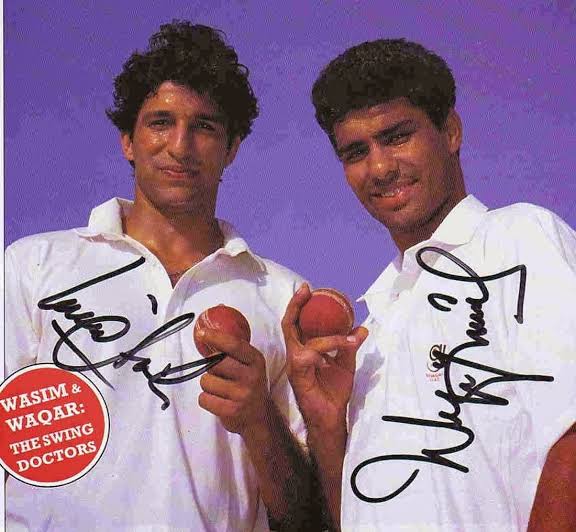In recent days, English bowler Dom Sibley has become the first player to violate the ICC’s ban on use of Saliva. The incident occurred on the fourth day of the second Test in the ongoing Test series between England and the West Indies when Dom inadvertently used saliva to polish the ball while fielding.
When he realized his mistake after a while, the England team went and informed the umpire about the mistake and the umpire immediately disinfected the ball. It should be noted that due to the coronavirus, the ICC has imposed a temporary ban on using saliva on the ball. The new ICC rules are being complied with, but such incidents may increase unintentionally.
The main reason for this is ‘Muscle Memory’. It’s something we’ve been doing for years and we don’t have to think much about doing it over and over again. For example, if you have been driving for 10 years, your foot will automatically move towards the clutch when changing gears.
Similarly, if the ball goes to any fielder or bowler during the game, they often spit on it, shine it and return it to the bowler or wicket-keeper. All this is done for swing or reverse swing. Also called ‘The Dark Art of Cricket’ by sports experts and fans.
The reason behind applying sweat or saliva on a part of the ball in cricket is to keep a part of the ball shiny and heavy. Doing this for many overs makes one part of the ball rough and the other shiny, i.e. one part will be slightly heavier than the other part. This helps to move the ball in the air which is called swing in the language of cricket.
This helps the bowlers not only in normal swing but also in reverse swing and late swing in the death overs. Just as it is very difficult for an off-spin bowler to bowl the other one ‘Doosra’, mastering the art of reverse swing is one of the most difficult aspects of the game for any fast bowler.
Late swing, reverse swing and normal swing all depend on the seam stitching of the ball. The common practice in all types of swings is the ability to use saliva and shine the ball perfectly. On the contrary, players often try to rough the other part of the ball immediately, which is against the rules of the game and is called ball tampering, instead of the lengthy process of polishing one part of the ball by putting on sweat or saliva.
Getting the swing in the same way, the world saw the biggest ball tampering scandal in cricket by Australia in 2018. Australian batsman Cameron Bancroft used sandpaper or rig material on the ball which was caught by television cameras. Another example is Pakistani cricketer and former captain Shahid Afridi when he tried to alter the condition of the ball by chewing it.
The process of getting the swing by polishing the ball with saliva is so effective that two players kept the batsmen in fear and complete control in the late 80’s till late 90’s. Wasim Akram and Waqar Younis also kept the art of reverse swing a secret and both of them benefited from it heavily. Since they both had the pace and skill to reverse the ball. Their wrist positions also played an integral part during their show of breath taking wizardry.
To get an idea of their late reverse swinging deliveries, the batsmen watched their video clips and tried to guess from their grip whether the incoming ball would come in or go out. When Waqar Younis started reversing the ball at a speed of 90 miles per hour, he and Wasim Akram were accused by English and Australian cricket experts of ball tampering which was never established.
It was the responsibility of the entire team to keep a part of the ball shining with sweat and saliva so that Wasim and Waqar could benefit from the reverse swing. Although the inventor of reverse swing is considered to be fast bowler Sarfraz Nawaz, the bowling of Wasim Akram and Waqar Younis proved to be extremely destructive through this art.
Martin Johnson, a well-known English cricket journalist, wrote in the British newspaper The Independent after his visit to Pakistan in 1992: “Except for Wasim and Waqar, there is no fast bowler who can swing the ball so much as he gets older.” There is also an idea that there is something special about Pakistani sweat.
But the secret of reverse swing was soon out, thanks to the advanced technology and video clips and now every bowler tries to swing after understanding it and knowing the process of doing it. And that’s why polishing the ball has become even more important in modern cricket.
It has been observed many times that players spit on the ball while chewing something sweet in the mouth. Under ICC rules, polishing a ball with a “sweet thing” is a violation of the rules of the game. This is because sweeteners contain ingredients that absorb into the surface of the ball and make it heavier.
In England, where green and fast pitches are usually made, children are taught to polish the ball from the beginning. This happens at the school and university level where the players are trained to improve their muscle memory’ and their conditioning.
The University of Bath in the UK conducted a study on this. The title of this research paper, conducted by the Department of Mechanical Engineering of the University, was ‘Practical Perspective of Cricket Swing Bowling’.
The researchers looked at nine different balls, from the new ball to the 80 overs. It used balls from Dukes and Coca-Bora, the cricket ball manufacturing companies. The study found that a normal ball would swing at a maximum speed of 75 miles per hour after 25 overs. But if there is something sweet in the mouth that is mixed with saliva and applied to a part of the ball, the ball can swing at a speed of more than 90 miles per hour.
The study also said that the ball would swing slightly in its original position, but would only reverse swing when the speed of the ball was 90 miles per hour or more. That is why players like Shoaib Akhtar, Brett Lee and Dale Steyn with the ability of express pace were more dangerous for the batsmen in the early overs.
But in the changing world of cricket, where every other fast bowler is reverse swinging the ball, they now face a new situation where the art may be limited to watching videos from the past.
After the T20, The Hundred has also been introduced in which there will be a match of 10 overs and 10 balls in each over. In that case, it will be very difficult for bowlers to reverse swing in the near future.
It is not possible to change the rules of cricket with regard to the ball, but in an attempt to make a name for themselves in the ranks of modern sports, cricket may leave its beauty and an art of bowling in the pages of history.









The characters don’t seem to be pragmatic and end up bring like another shonen anime.
Comments are closed.